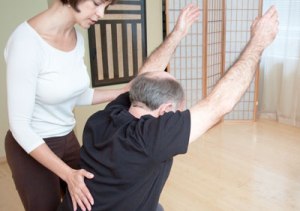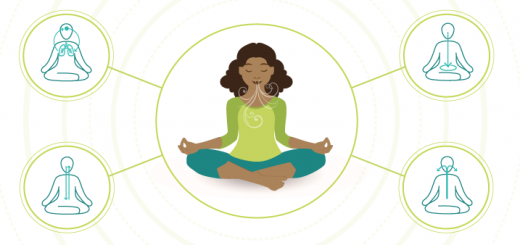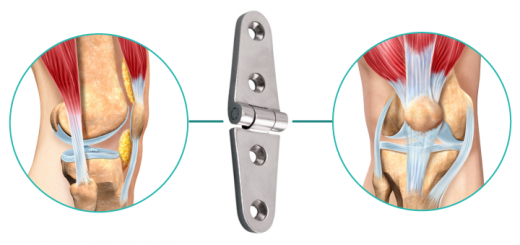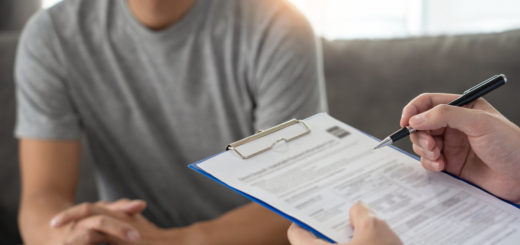What do seniors need in a yoga class?
18Couple of days ago I read an article titled “Yoga after 50“, that made it sound as if older students practicing yoga is some sort of a novel idea. I couldn’t help but wonder – how did we manage to distort the yoga tradition in such a way, that it surprises us that people older then 50 can do it? I believe it was Sri Krishnamacharya who said: “If you can breathe, you can practice yoga”. Certainly, older students will have different needs, and this is what we’ll discuss here.
Personally, I love working with older students. In fact, the majority of my private clients and students in group classes are older then 60. Why do I enjoy it so much? Well, younger students usually have many more things to juggle in their lives – family, careers, etc, which places great demands on their time and energy. They certainly need yoga, but, understandably, yoga is often not a priority. My older students usually have established careers or are already retired, their children are grown, therefore they are more in charge of their time. Their priorities often shift from taking care of others to taking care of themselves and yoga becomes an important piece of the self-care routine. This means that they are more consistent in their class attendance, they keep their appointments and they are interested in going deeper, beyond physical contortion. Some of my students have been studying with me for 10+ years – how’s that for commitment to practice? And since many of my students are older professional women, they are incredibly supportive of me as a yoga teacher and a yoga studio owner, which makes our relationship even more special.
 There are two main ways to approach your work with older students: yoga classes and private yoga sessions. I usually recommend that new students, especially if they are 50 and older, come see me privately before they join the class. Meeting them one-on-one gives me an opportunity to get a better idea of what’s going on, what they need and what kind of limitations they have. It also helps to establish our relationship for the future. I don’t charge anything for that meeting, so most people get excited about it right away. After that initial consultation I am usually in a much better position to make a recommendation about whether private sessions or group classes would be the best fit for them.
There are two main ways to approach your work with older students: yoga classes and private yoga sessions. I usually recommend that new students, especially if they are 50 and older, come see me privately before they join the class. Meeting them one-on-one gives me an opportunity to get a better idea of what’s going on, what they need and what kind of limitations they have. It also helps to establish our relationship for the future. I don’t charge anything for that meeting, so most people get excited about it right away. After that initial consultation I am usually in a much better position to make a recommendation about whether private sessions or group classes would be the best fit for them.
Let’s look at a yoga class first. First of all, I believe that the term “Gentle Yoga’ is largely misunderstood. This term is often used to describe yoga classes aimed at beginners and older students; what does it mean, anyway? Sometimes it is even used interchangeably with “Restorative Yoga”, which is an entirely different thing. Theoretically, Gentle Yoga is supposed to be less challenging then other classes, have slower pace and place more emphasis on the breath – all fantastic ideas. But often I observe that teachers take it to the extreme, simplifying the movement dramatically, keeping their students on their backs for most of the class and spending more time articulating the joints then moving the spine. Yet maintaining the mobility of the spine is fundamental to any well-rounded yoga practice and becomes even more important as we get older. Joseph Pilates said: “You are only as old as your spine is flexible.” According to the yoga tradition, spine is both structural and energetic center of the body and we need to take great care of it. Since your spine is capable of moving in 5 different directions – forward, backwards, sideways, slightly upwards and rotate – a balanced yoga practice needs to have some combination of forward bending, back bending, lateral bending, axial extension and twisting. You don’t have to pile them all into one class, but we need to make sure that we don’t neglect either one of those.
Therefore, the primary need for most senior students will be maintaining the mobility of the spine. Next, we need to make sure that we include some core strengthening work. In the yoga world we talk a lot about flexibility and often forget that another side of that coin is stability. Strong core (I don’t mean just abdominal muscles) helps protect and support the lower back, links the upper and the lower body and makes the entire structure more balanced, stable and efficient.
Next is balance. We are all aware that our balancing capacity declines with age, and falling can be devastating to students both physically and mentally. That’s why we need to continuously work on maintaining (or developing) their ability to balance.
And last, but not least, is flexibility. I would warn against focusing on flexibility for it’s own sake. After all, our students do not intend to audition for Cirque du Soleil any time soon; all they want is to be able to get down on the floor to play with their grand kids, feel less stiff when they wake up, be able to reach for the top shelf without shoulder pain, etc. I call it “functional flexibility”; it’s less about putting a foot behind your head and more about being able to perform daily tasks with minimum discomfort.
So there you have it. The physical needs of older students could be boiled down to these four:
- Maintaining the mobility of the spine
- Strengthening the core musculature
- Developing the ability to balance
- Bringing the joints through the full range of motion to develop “functional flexibility”
 After years of working with older population I also know that most seniors will benefit from a longer warm-up, slower pace, simpler poses and some predictability of sequencing. They usually like to stay engaged and give their feedback during the practice; they prefer to start on their back, do some breathing work at the end, have longer Savasana and minimal sitting on the floor.
After years of working with older population I also know that most seniors will benefit from a longer warm-up, slower pace, simpler poses and some predictability of sequencing. They usually like to stay engaged and give their feedback during the practice; they prefer to start on their back, do some breathing work at the end, have longer Savasana and minimal sitting on the floor.
Observing these simple principles minimizes the risk dramatically. Of course, you always need to monitor your students closely and encourage them to speak up if something doesn’t feel right. And of course, you will need to modify and adapt to make the practice safer for individual students. But that applies to any yoga class regardless of the participant’s age; we all have limitations in one area or another.
On the other hand, when you design a practice for an individual senior, you should be much more specific. Yes, she might benefit from the things that you have worked on in a class, but you will need much more information on what’s going on with her and what she is looking for to make her practice effective. Knowing her priorities will set the direction for your work together. You might discover that she is most bothered by stiff knees that limit her walking; or that she can’t sleep through the night and wakes up tired; or that she is having trouble focusing when she reads the paper. A carefully designed yoga practice can address any one of these concerns. Once you know what she wants to work on, you can select appropriate yogic elements and organize them in a way that targets the primary issue. Each student’s individual differences and personal preferences are also important to consider. She is much more likely to continue with the practice if it resonates with her on some level and suits her personality. If you give her a breathing technique that makes her feel lightheaded or a mantra that grinds on her nerves, no matter how appropriate it is for her CONDITION, it would not be appropriate for HER.
The bottom line is that older adults do and should practice yoga. It can become a primary form of self care or an organic addition to other things that they are already doing. Our job as yoga teaches is to encourage it, provide support and help them acquire confidence to continue. The world would be a better place if more people practiced yoga!




















I am a yoga and Pilates teacher. How’s come I hardly ever hear a yoga teacher talk about zipping it up, pelvic floor and even sometimes drawing the navel in? I was very happy to hear you mention the zipper! What are your thoughts? In my 200 hour training, they never spoke of navel and pelvic floor and the anatomy was lacking:(
Hi Michele! I am mystified myself why zip up is not mentioned more in yoga classes. Many yoga poses done without the abdominal contraction are quite risky for the back, sacrum, etc. Lack of knowledge? Lack of awareness? I am not sure. But you and I can start a zip-up campaign to raise the awareness 🙂 I do plan to write a blog entry about it in a couple of weeks; would love to hear your feedback!
I am 70 and teach yoga to students who range in age from 20 to 60+. We all do the same postures with modifications when needed and not always for the 50+ students. Having graduate work in geriatrics and adapted physical education has given me a good barometer for how to approach all age groups and abilities. I don’t think having older students presents any real challenges as we are taught to adapt to all levels and to train our students to honor their physical messages. Body awareness is our goal. Seniors don’t want to be treated differently and we shouldn’t assume that they are limited because of their age.
Barbara: Well said! I completely agree. Age is never really an issue.
I really like your sample practices, but they seem really long! How long does it take to teach this to a group? (the first one, in particular)
Hi Lydia! From my experience the practice that’s 20-22 items long usually takes about 1.25-1.5 hours. It all depends on how much time you spend in each pose, of course. When you just move in-out of the pose, it takes only 1-2 min, and then you can hold the pose for another minute or so on each side. For inexperienced practitioners I would make the classes shorter, since it takes them a while to understand what we are doing and transition from one thing to the next. Experienced practitioners will take less time with that. Stay tuned, I will explore shorter, more precise practices later. Thanks for reading!
I like your comments about Gentle Yoga as it relates to seniors. Slow it down? Speak clearly? Make allowances via modified poses or props? All good. But I think Yoga, regardless of the demographic, is simply more effective when vigor is part of the practice. I’m not doing a hot room class with my Senior Men, but I do make the distinction between a resting pose and one where there’s more effort.
Thank you for the post! This was really helpful for me.
You are very welcome, Elizabeth; I am glad you found it useful!
Hi Olga,
I googled “Do the inner thigh muscles protect the hips?” and found your website. Yesterday I did the class for the inner and outer thighs, and it helped me SO MUCH! I was a professional dancer, (toured with Broadway shows,) and taught Vaganova ballet and yoga for many years. I am almost 50, and since I stopped dancing, I’ve had severe hip problems. I think my pelvis slipped out of alignment. My legs have shrunk and my thighs are disappearing! The bones jut out on the sides! I can do Pilates and some yoga, but not like when I was young. This set will really help me rebuild those muscles. I’ve been swimming and biking, but it’s not enough. I really appreciate your knowledge and skill…your articles are excellent, too. Thanks again!
Thank you for your comment! It is my understanding that ballet can do a number on the hips, especially certain styles (like Martha Graham style). Probably all that external rotation…Sounds like you are on the right track trying to rebuild strength in the inner and outer thighs – I bet those were very strong when you danced, but since swimming and biking don’t involve them to the same degree, the entire hip structure might feel out of balance. You can also try this practice, it is a well-rounded one specifically for hip strengthening (I bet lack of flexibility is not your issue 🙂 http://sequencewiz.org/2013/12/04/hip-strengthening-practice/ Also I put together a little assessment practice for the hips that you can use to investigate where the imbalances are: http://sequencewiz.org/2014/04/25/assessment-yoga-practice-hips/ Hope it helps!
Hi Olga, I just wanted to follow up. I went and had an xray, and it turns out that I needed to have both hips replaced! I had worn away all of the cartilage, and both hips were bone on bone. The surgeon said that the ball of the socket had shifted outward on both legs.
It’s been a month since my surgery, and I am starting to do some easy yoga. Just thought I’d let you know. Thank you for you post.
I have been teaching at a senior center this past year, after earning my 200 hour yoga teacher certificate (By the way, I have, on and off, practiced yoga for almost 40 years). Anyway, I noticed that one of my students seemed to be struggling the last time I taught class, so I asked her afterwards what was going on. She hesitated, and finally shared with me that she has glaucoma! This was the first I had ever heard her admit anything like this. Any way, I told her I was glad she shared that with me so I could design yoga classes to help her better. I am working on designing classes where we don’t let the head get below the heart, for her benefit, but sometimes my other students will need asanas that do just that. I always make sure my students know they are welcome to rest at any time, or come out of a pose for any reason. Any suggestions? Thanks in advance.
Hi Karen! In situations like that I always recommend that the student comes to see me privately for at least one session. Then we discuss her symptoms, figure out the movements that cause her the most trouble and give her options for those. Then in a class she can just do those options when everybody else is doing something else. And you can remind her, something like “We will be doing a standing forward bend; Jane please put your hands on a chair.” It will require more concentration at first, but then it will become easier for both you and your student. Hope this helps!
Thank you, a simple but informative article, love it!
I turned to this article with hope and curiosity. I am 67. This could/should be for me. Much of the ground covered in this article is thoughtful and reasonable. I am bothered by “all they want is to get down on the floor to play with their grandkids, feel less stiff and reach a shelf???” What the hekkk!! Who told you this? How can you sumnnarize seniors’ desires in such a belittling way?
Seniors want functional flexibility and strength to be able to open car doors, chain store doors, walk up and down stairs in an office or work assignment. Seniors want to hike to bike to run to dance, to help someone move carrying heavy boxes without losing their breath to travel without fearing being a target, to move the refrigerator aside to clean behind it. Seniors want to be strong and healthy. Seniors want to be able to get down on the floor to get kitchen supplies out from a bottom shelf and get up quickly and safely. Seniors want to look forward to new interesting recreational passtimes without major fears.
I am older. I do headstands, tricky balance poses wheel and keep up with 30 year olds in power classes. Seniors need to not be lumped into declining play on the floor people but rather people who reach and attain vibrancy and healthy strong bodies and lives.
Hi Cathy – I completely agree with everything you said! In the article I meant that seniors (or anybody else) needs functional flexibility and stability, meaning not flexibility for it’s own sake, but to do things that want and love to do.
Hi, Olga. Good article. Many Yoga teachers need to understand what they have to teach or deliver their clients. 80% of my clients are 50 plus. I am very connected since I am also in the same age group. I am very happy and contended about this since I am a tool to make their life pleasant. You article has give more clarity. Thanks